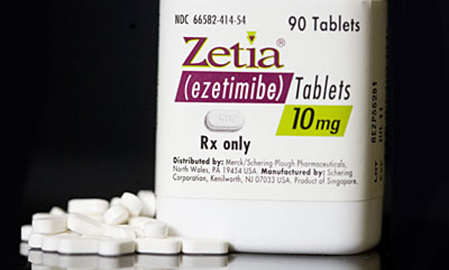Despite new US cholesterol guidelines and a clinical trial that tamped down hopes that Merck’s cholesterol drug Zetia could make a difference in the rare disease space, an analysis of prescription trends found that the drug continues to plug along, earning almost $3 billion in sales in 2013.
While the drugmaker gives a price hike some of the credit, researchers found that a bigger force is in play: Canada and outdated lipid guidelines that said Zetia could be added to statins. These guidelines stayed in place despite the clinical trial ENHANCE (published in 2008), which showed that patients taking a combination of Zetia and simvastatin did not have a lower incidence of atherosclerosis than did patients on a simvastatin-only regimen.
Researchers found that the study was followed by at 47.1% drop in US prescriptions by 2009, whereas Canada’s prescriptions started to rise. Researchers also found a higher use in one province: Saskatchewan, which has the drug on an unrestricted formulary level. Researchers believe this formulary status led to “a large number of inappropriate prescriptions, at odds with Canadian clinical guidelines.”
Researchers also credit marketing with bolstering Zetia’s commercial life, noting that advertisements tend to focus on cholesterol numbers, whereas the US guidelines have recently set this metric aside. This change has led to speculation that while doctors may continue to prescribe statins, add-ons—like Merck’s Zetia and Vytorin—could wane.
The drugmaker is also waiting for another Zetia outcomes study to wrap later this year. This study, called IMPROVE-IT, assesses Merck’s Vytorin, a combination drug that includes Zetia and simvistatin, and is set on determining if the drug is associated with a lower risk of CV death, major coronary events, and stroke.
Meanwhile, Zetia’s patent has only two years left in the US.







